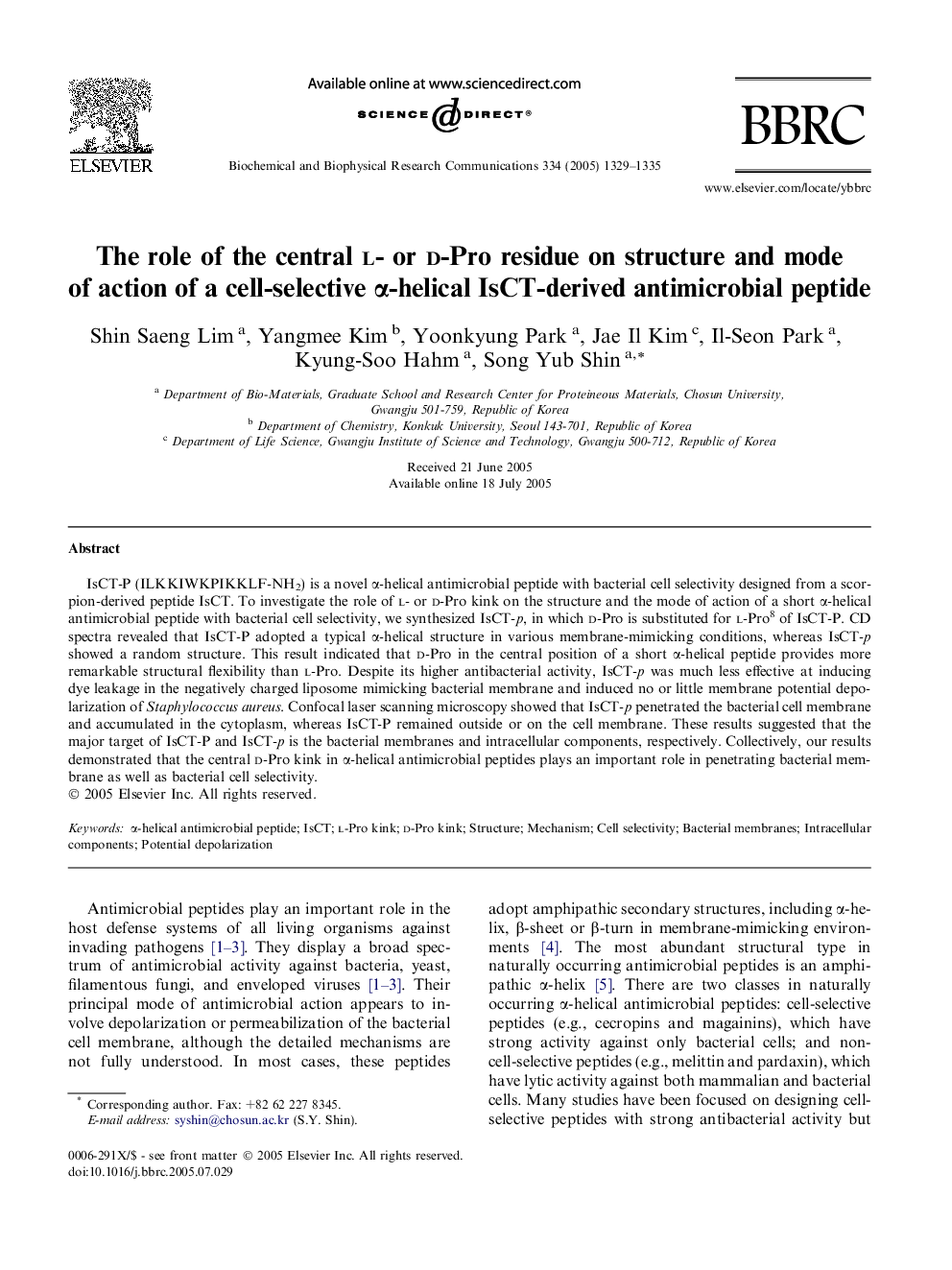| Article ID | Journal | Published Year | Pages | File Type |
|---|---|---|---|---|
| 10769070 | Biochemical and Biophysical Research Communications | 2005 | 7 Pages |
Abstract
IsCT-P (ILKKIWKPIKKLF-NH2) is a novel α-helical antimicrobial peptide with bacterial cell selectivity designed from a scorpion-derived peptide IsCT. To investigate the role of l- or d-Pro kink on the structure and the mode of action of a short α-helical antimicrobial peptide with bacterial cell selectivity, we synthesized IsCT-p, in which d-Pro is substituted for l-Pro8 of IsCT-P. CD spectra revealed that IsCT-P adopted a typical α-helical structure in various membrane-mimicking conditions, whereas IsCT-p showed a random structure. This result indicated that d-Pro in the central position of a short α-helical peptide provides more remarkable structural flexibility than l-Pro. Despite its higher antibacterial activity, IsCT-p was much less effective at inducing dye leakage in the negatively charged liposome mimicking bacterial membrane and induced no or little membrane potential depolarization of Staphylococcus aureus. Confocal laser scanning microscopy showed that IsCT-p penetrated the bacterial cell membrane and accumulated in the cytoplasm, whereas IsCT-P remained outside or on the cell membrane. These results suggested that the major target of IsCT-P and IsCT-p is the bacterial membranes and intracellular components, respectively. Collectively, our results demonstrated that the central d-Pro kink in α-helical antimicrobial peptides plays an important role in penetrating bacterial membrane as well as bacterial cell selectivity.
Related Topics
Life Sciences
Biochemistry, Genetics and Molecular Biology
Biochemistry
Authors
Shin Saeng Lim, Yangmee Kim, Yoonkyung Park, Jae Il Kim, Il-Seon Park, Kyung-Soo Hahm, Song Yub Shin,
